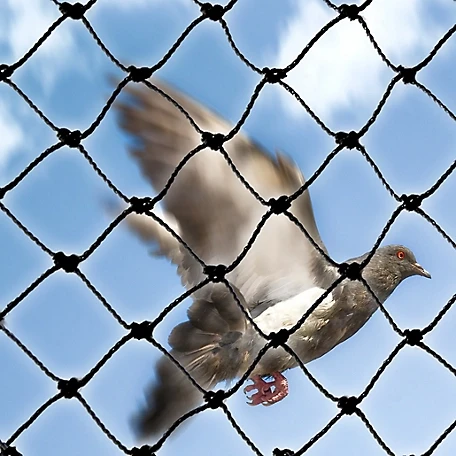-
 Afrikaans
Afrikaans -
 Albanian
Albanian -
 Amharic
Amharic -
 Arabic
Arabic -
 Armenian
Armenian -
 Azerbaijani
Azerbaijani -
 Basque
Basque -
 Belarusian
Belarusian -
 Bengali
Bengali -
 Bosnian
Bosnian -
 Bulgarian
Bulgarian -
 Catalan
Catalan -
 Cebuano
Cebuano -
 China
China -
 Corsican
Corsican -
 Croatian
Croatian -
 Czech
Czech -
 Danish
Danish -
 Dutch
Dutch -
 English
English -
 Esperanto
Esperanto -
 Estonian
Estonian -
 Finnish
Finnish -
 French
French -
 Frisian
Frisian -
 Galician
Galician -
 Georgian
Georgian -
 German
German -
 Greek
Greek -
 Gujarati
Gujarati -
 Haitian Creole
Haitian Creole -
 hausa
hausa -
 hawaiian
hawaiian -
 Hebrew
Hebrew -
 Hindi
Hindi -
 Miao
Miao -
 Hungarian
Hungarian -
 Icelandic
Icelandic -
 igbo
igbo -
 Indonesian
Indonesian -
 irish
irish -
 Italian
Italian -
 Japanese
Japanese -
 Javanese
Javanese -
 Kannada
Kannada -
 kazakh
kazakh -
 Khmer
Khmer -
 Rwandese
Rwandese -
 Korean
Korean -
 Kurdish
Kurdish -
 Kyrgyz
Kyrgyz -
 Lao
Lao -
 Latin
Latin -
 Latvian
Latvian -
 Lithuanian
Lithuanian -
 Luxembourgish
Luxembourgish -
 Macedonian
Macedonian -
 Malgashi
Malgashi -
 Malay
Malay -
 Malayalam
Malayalam -
 Maltese
Maltese -
 Maori
Maori -
 Marathi
Marathi -
 Mongolian
Mongolian -
 Myanmar
Myanmar -
 Nepali
Nepali -
 Norwegian
Norwegian -
 Norwegian
Norwegian -
 Occitan
Occitan -
 Pashto
Pashto -
 Persian
Persian -
 Polish
Polish -
 Portuguese
Portuguese -
 Punjabi
Punjabi -
 Romanian
Romanian -
 Russian
Russian -
 Samoan
Samoan -
 Scottish Gaelic
Scottish Gaelic -
 Serbian
Serbian -
 Sesotho
Sesotho -
 Shona
Shona -
 Sindhi
Sindhi -
 Sinhala
Sinhala -
 Slovak
Slovak -
 Slovenian
Slovenian -
 Somali
Somali -
 Spanish
Spanish -
 Sundanese
Sundanese -
 Swahili
Swahili -
 Swedish
Swedish -
 Tagalog
Tagalog -
 Tajik
Tajik -
 Tamil
Tamil -
 Tatar
Tatar -
 Telugu
Telugu -
 Thai
Thai -
 Turkish
Turkish -
 Turkmen
Turkmen -
 Ukrainian
Ukrainian -
 Urdu
Urdu -
 Uighur
Uighur -
 Uzbek
Uzbek -
 Vietnamese
Vietnamese -
 Welsh
Welsh -
 Bantu
Bantu -
 Yiddish
Yiddish -
 Yoruba
Yoruba -
 Zulu
Zulu
Effective Bird Control Solutions Using Anti-Bird Netting for Gardens and Crops
The Importance of Anti-Bird Netting Protecting Crops and Biodiversity
Birds can be both a boon and a bane in agriculture. While they play crucial roles in controlling pests and pollinating plants, they can also wreak havoc on crops, leading to significant economic losses for farmers. To mitigate this issue, anti-bird netting has emerged as an effective solution that balances agricultural needs with the preservation of biodiversity.
What is Anti-Bird Netting?
Anti-bird netting consists of lightweight, durable mesh materials designed to prevent birds from accessing crops while allowing sunlight, air, and rain to nourish the plants underneath. Made from various materials such as polyethylene or polypropylene, anti-bird nets are specifically engineered to withstand various weather conditions, ensuring long-lasting protection for fields and orchards. These nets can be installed in several configurations, depending on the type of crop and the specific bird species that pose a threat.
The Benefits of Anti-Bird Netting
One of the primary advantages of anti-bird netting is its efficiency in safeguarding crops. By creating a physical barrier, it significantly reduces crop damage caused by birds, which can lead to increased yields and more robust financial returns for farmers. This method is particularly beneficial for fruits and berries, which often attract a variety of bird species eager for a meal.
Furthermore, anti-bird netting offers a more sustainable alternative to traditional bird control methods, such as traps or chemical repellents. While chemicals can have harmful side effects on other wildlife and the ecosystem, netting provides a non-toxic solution that does not endanger beneficial species. By protecting crops without relying on harmful substances, farmers contribute to a healthier ecosystem.
anti bird netting

Environmental Considerations
While anti-bird netting serves to protect crops, it is essential to consider its impact on local wildlife. Improper installation or materials can potentially trap small animals, causing unintended harm to local fauna. Therefore, it is crucial for farmers to choose bird netting solutions that are designed with the safety of all wildlife in mind. Additionally, using nets with larger mesh sizes can help prevent entrapment while still deterring birds from reaching the crops.
Best Practices for Installation
To maximize the effectiveness of anti-bird netting, proper installation techniques must be implemented. Farmers should ensure the nets are securely fastened and monitored regularly to address any areas that may sag or allow gaps for birds to enter. Utilizing supports or posts to elevate the nets above the plants can facilitate air circulation and minimize the risk of damage to the crops beneath.
Farmers should also consider seasonal changes and local bird migration patterns when planning to use anti-bird netting. Timing the installation of nets to coincide with peak bird activity periods can help increase their effectiveness, ensuring crops are well protected during vulnerable times.
Conclusion
In a world increasingly impacted by climate change and the loss of biodiversity, the role of anti-bird netting in agriculture cannot be understated. By providing a simple yet effective solution to protect crops, farmers can enhance their yields while acting as stewards of the environment. As more agricultural stakeholders recognize the benefits of sustainable practices, the adoption of anti-bird netting will likely continue to rise, offering a hopeful path toward a more balanced coexistence with nature. The future of agriculture depends on innovation that not only protects crops but also preserves the biodiversity that is crucial for healthy ecosystems.
-
Shipping Plastic Bags for Every NeedNewsJul.24,2025
-
Safety Netting: Your Shield in ConstructionNewsJul.24,2025
-
Plastic Mesh Netting for Everyday UseNewsJul.24,2025
-
Nylon Netting for Every UseNewsJul.24,2025
-
Mesh Breeder Box for Fish TanksNewsJul.24,2025
-
Expanded Steel Mesh Offers Durable VersatilityNewsJul.24,2025











